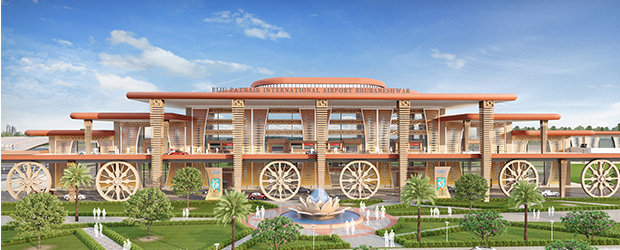Over the years, airports have evolved from just a medium of transportation into multi-functional international hubs. With the ever-increasing need for infrastructure, the demand for building new airports has skyrocketed with many new projects underway. But today’s contemporary airports are more than just massive steel and glass structures aped from the west and planted across cities in the name of development.
With the advancement in technology and design, we should not be afraid to try new approaches towards creating airports that are not only sustainable in design and offer global facilities, but also infuse a sense of belonging with the Indian culture.
We have always striven to introduce various active and passive design strategies while also employing innovative technology to make airports efficient. With the new airports like Bhubneshwar and Varanasi in motion, along with creating designs that are sustainable, we have consciously focused on the inclusion of the local arts and culture. Airports are a gateway to the city they are built-in. The manifestation of its cultural and social context creates a sense of belonging and identity for its users.
The aim is to represent nature as a piece of art and architecture that inspires the visitors' mind so that one develops a sense of respect towards natural resources while creating a landmark infrastructure which is sustainable.
Our firm has always stood by its philosophy of "a built form should not be treated as a dead mass of brick and concrete, but as a living organism, allowing it to breathe with nature.” This is what breathes the soul into the design. - Prof. Charanjit S Shah, Founding Principal, Creative Group
In Bhubaneshwar Airport, the drop off the bay is flanked by huge columns which are designed reflecting the traditional motifs and sculptures while the wheels of the chariot are symbolic to 'Sun Dial', both inspired from traditional temple architecture. Using the locally available soapstone for the sundial and the timber for the band with motifs on the top not only retains its original character but also makes it cost-effective. The laser-cut jaali with bronze golden finish clearly sets a good example for fusing the contemporary materials with traditional design elements.
The project is a compliment to a holistic development based on the local context, not just in terms of elevation but also volume and space. As the visitors enter the building, they should feel as if they have entered the temple itself. Architecture has the capacity to influence people’s behavior and feelings. Only when they will be able to relate with their surroundings, is when they will experience a sense of belonging and ownership towards it. Inspired by Pattachitra motifs and colors, the check-in counter backdrop constitutes of curved lines in the form of garlands and floral patterns. From the signages to the artwork on the ceiling, the building is a tribute to Odisha’s large treasure of culture and heritage.
With a rich cultural and religious heritage, Varanasi is the holiest of the seven sacred cities of India. The design form of the airport took its inspiration from contrasting city skyline consisting of the temples, cuboidal houses, and Havelis. The temples form an instant connection with the people, and thus the idea of using simple triangular geometry to replicate a temple peak was adopted to infuse local architecture with the design.
Even the arrangement of the elements has been derived from the historic ghats of Benaras. The hierarchy of the steps has been replicated into triangular elements that are continuously arranged in the progression towards the center, with each triangular structural element folded inwards giving the structure a dynamic form, thus creating a perfect balance of the traditional and the modern. It has been given a bronze gold finish to idolize the image of the temple.
Use of Shikargah pattern on silk (woven in Varanasi) as Jaali pattern on the roof creates an interesting play of light and shadow while the ceiling inspired from the infamous Banarasi saree aims to deeply inherit the traditional handicrafts of the city and create a connection with its roots. Even on the inside, the spaces that have been created that are a modern interpretation of the ghats with lighting create an effect of floating diyas.
Airports as megastructures have always been thought of as energy guzzlers. With the new and unconventional methods now being adopted to reduce the ecological footprint of these structures, we should now realize that going green is the way for the future.
Our firm has always played an active role in propagating sustainability and introducing practices such as water conservation and the use of non-conventional resources. Respecting the solar movement and orienting the building in a way that minimizes the heat gain while maximizing the daylight forms the basis for our designs.
“We, as architects, have the responsibility of making architecture a force for mobilizing cities and rejuvenating cultures.” - Ar. Gurpreet S Shah, Principal Architect, Creative Group
A successful design is one that addresses the urban and current issues of the 21st-century cities and strives to deal with them in a manner that is context-driven and solution-oriented, and not just for the sake of development. There is a need for a design that is holistic in its approach - technologically advanced, eco-friendly, and responsive to the local environment.
We believe that this will be the approach for the future, where buildings are created with a feeling of belonging and a soul that responds to the Indian culture. This would be the trendsetter for the aviation industry.


